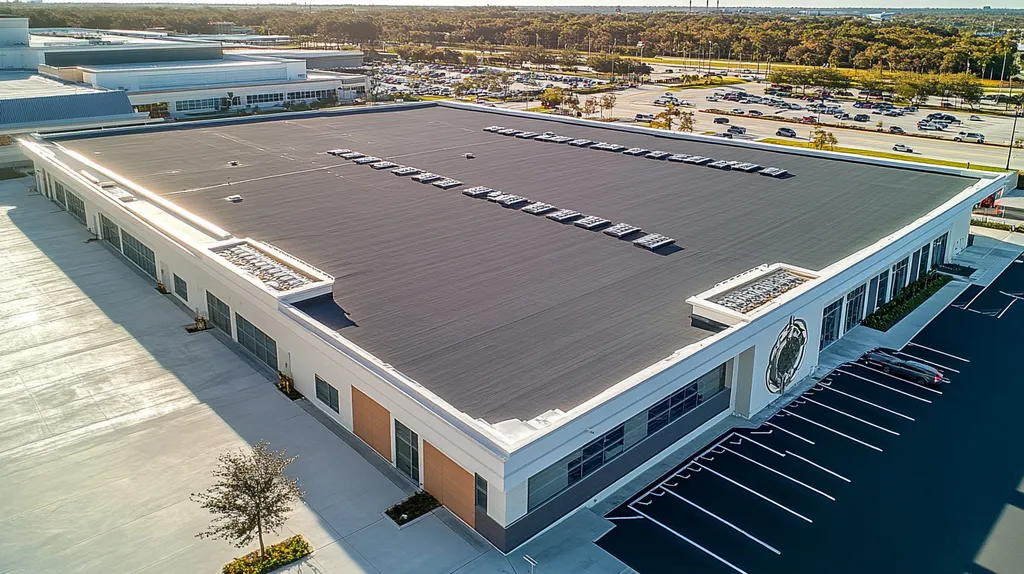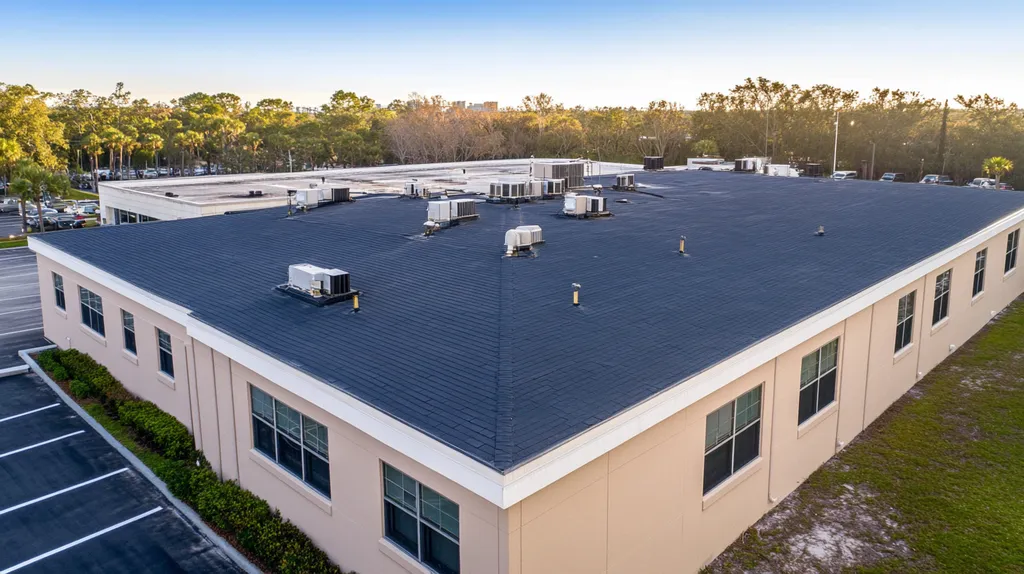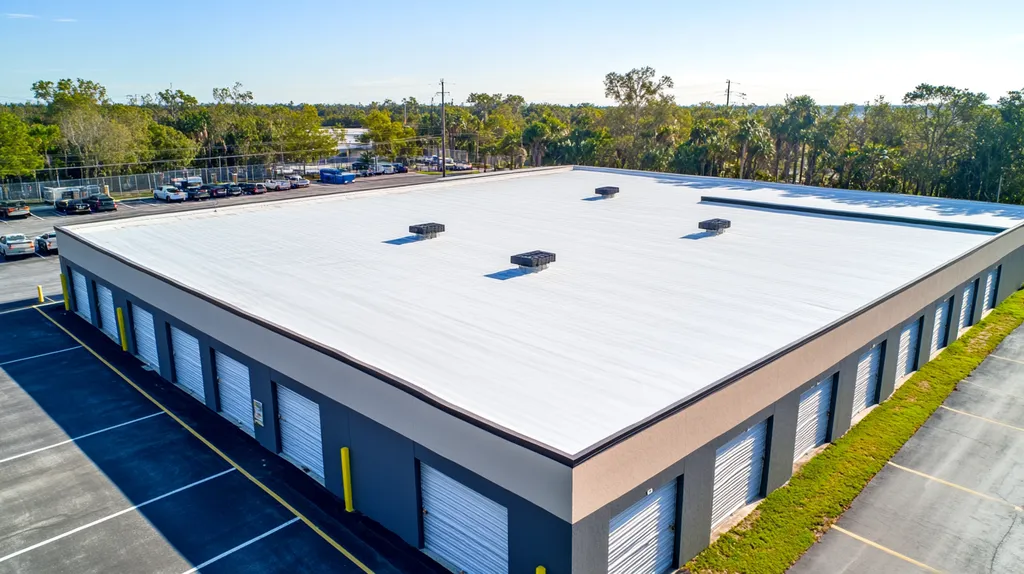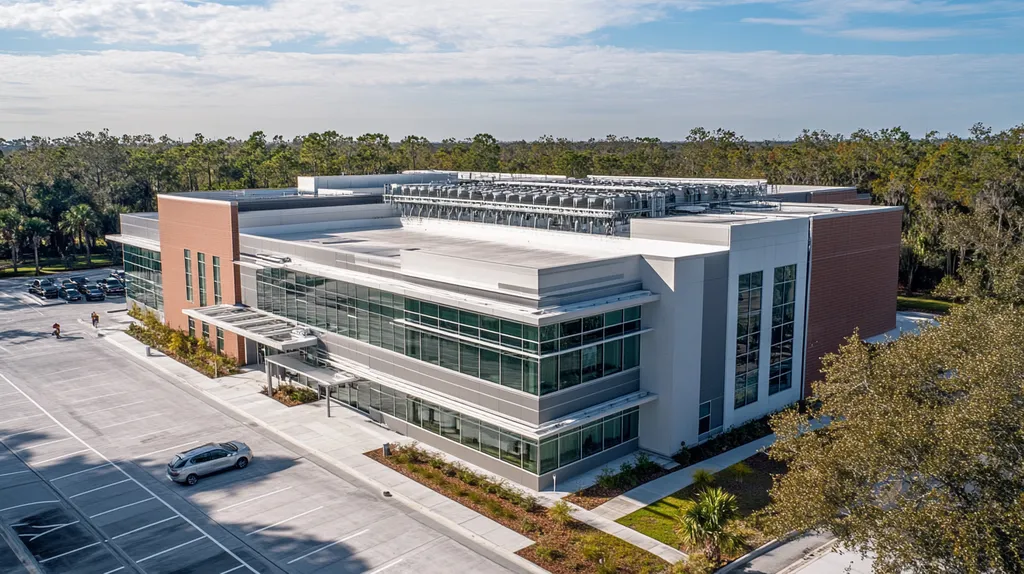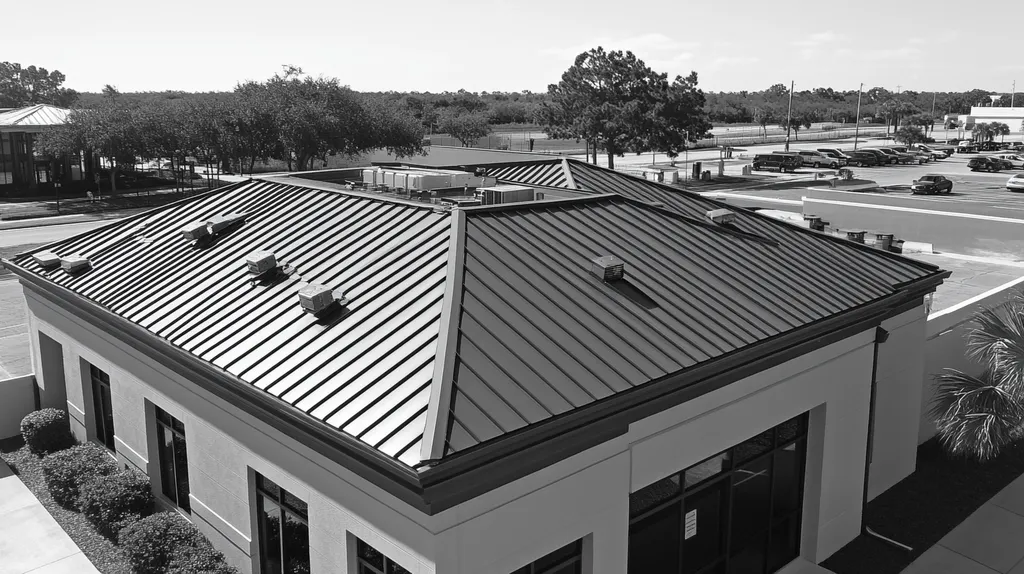Welcome to today’s Battle Royale featuring two roofing heavyweights: “Reflective Coatings” in the east corner versus “Insulative Coatings” in the west!
Tonight’s showdown pits these contenders against each other across six punishing rounds designed to test every aspect of their performance for Commercial Roof Energy Efficiency.
At stake? Millions in potential costs, decades of building protection, and the critical performance demands of modern commercial and industrial facilities.
Our professional judging panel will evaluate each round on technical merit, real-world performance, and value delivery. After all six rounds, we’ll declare our ultimate champion.
Ladies and gentlemen, facility managers and building owners… it’s time to rumble!
ROUND 1: INITIAL COSTS & INSTALLATION
In today’s volatile energy market, commercial property owners face critical decisions about their roofing systems that impact both immediate budgets and long-term operational costs. The choice between reflective and insulative coatings represents a significant investment that demands careful analysis of multiple cost factors.
Understanding the true cost implications requires examining not just material prices, but also installation complexity and project timeframes that can affect business operations. Making the wrong choice can lead to decades of increased energy expenses.
Material Expenses
Cool roof coatings have revolutionized how commercial buildings manage heat absorption and energy efficiency. While these reflective solutions may require a higher initial investment, they significantly reduce indoor temperatures and decrease air conditioning demands. (source: Castagra)
These specialized reflective materials often come with premium pricing due to their advanced formulations and performance requirements. However, many jurisdictions offer financial incentives and rebates that can offset these costs.
Insulative coatings typically present lower upfront material costs, using conventional components that are readily available. This initial affordability makes them attractive for projects with tight budgets.
Given the availability of incentives for reflective coatings and their long-term savings potential versus the lower initial cost of insulative options, this category results in a “TIE”.
Installation Complexity
Reflective coating installations demand meticulous surface preparation to ensure proper adhesion and optimal performance. This includes thorough cleaning, repairs to existing surfaces, and precise application techniques.
The application process requires specific weather conditions and temperature ranges, which can create scheduling challenges. Additionally, specialized equipment and skilled labor are often necessary for proper installation.
Insulative coatings generally follow more straightforward installation procedures with fewer environmental restrictions. Their application typically requires less specialized equipment and can be completed by general roofing crews.
The simpler installation requirements and fewer technical constraints give insulative coatings a clear “ADVANTAGE” in this category.
Project Timeline
Project duration significantly impacts business operations and overall costs. Reflective coating installations often require extended timelines due to surface preparation requirements and curing times.
Weather dependencies can further extend project schedules for reflective coatings, as optimal conditions are necessary for proper application and curing. This unpredictability can disrupt business operations.
Insulative coatings typically offer more flexible installation schedules with shorter completion times. Their simpler application process and fewer weather restrictions allow for more predictable project timelines.
The faster completion times and greater scheduling flexibility give insulative coatings an “ADVANTAGE” in this category.
ROUND 1 WINNER: Insulative Coatings
ROUND 2: DURABILITY & LIFESPAN
When evaluating commercial roofing solutions, durability and lifespan directly impact both short-term maintenance costs and long-term facility operations. With energy costs continuing to rise, the longevity of protective coatings becomes increasingly critical for maintaining building efficiency and controlling expenses.
Recent weather pattern changes have intensified the importance of coating durability, as extreme temperature fluctuations and severe storms put unprecedented stress on commercial roofing systems. Understanding how different coating types perform under these conditions is essential for making informed investment decisions.
Weather Resistance
High albedo roof coatings demonstrate superior performance in reflecting solar radiation, reducing rooftop temperatures by up to 23% in hot climates. This temperature reduction significantly extends the life of underlying roofing materials by minimizing thermal stress and UV damage. (source: ASME Sustainable Buildings)
However, reflective coatings can become less effective over time as surface dirt and debris reduce their reflective properties. Regular cleaning and maintenance are essential to maintain optimal performance.
Insulative coatings provide consistent protection against temperature fluctuations regardless of surface conditions. Their effectiveness remains stable even when exposed to environmental contaminants.
Given their reliable long-term performance without special maintenance requirements, insulative coatings claim an “ADVANTAGE” in weather resistance.
Physical Durability
Reflective coatings typically form a hard, protective surface that resists normal wear and tear. Their primary vulnerability lies in surface scratches or damage that can compromise their reflective properties.
These coatings may require touch-ups or reapplication in high-traffic areas where maintenance crews frequently access the roof. Impact from falling debris or equipment can also diminish their effectiveness.
Insulative coatings generally provide better resistance to physical damage due to their thicker application and more resilient composition. Their performance remains consistent even if the surface sustains minor damage.
The superior resistance to physical wear gives insulative coatings an “ADVANTAGE” in this category.
Maintenance Requirements
Reflective coatings demand regular inspection and cleaning to maintain their energy-saving properties. This typically includes semi-annual professional cleaning and periodic reapplication of damaged areas.
The maintenance schedule for reflective coatings must account for local environmental conditions, with more frequent attention needed in areas with high pollution or abundant tree coverage.
Insulative coatings require minimal ongoing maintenance beyond routine roof inspections. Their performance remains stable without special cleaning or treatment protocols.
The lower maintenance burden and consistent performance give insulative coatings an “ADVANTAGE” in this category.
ROUND 2 WINNER: Insulative Coatings
ROUND 3: PERFORMANCE FACTORS
As energy costs continue climbing and climate regulations tighten, the performance of commercial roof coatings has become a critical factor in building operations. Property owners face increasing pressure to optimize their buildings’ energy efficiency while maintaining comfortable indoor environments year-round.
The U.S. Department of Energy reports that ENERGY STAR-qualified cool roof products can save up to $1.11 per square foot over their lifetime, demonstrating the substantial impact coating choices have on operational costs. (source: U.S. Department of Energy)
Temperature Control
Temperature control capabilities directly impact building energy consumption and occupant comfort. In summer months, effective temperature management can reduce cooling loads by up to 25%.
Reflective coatings excel at temperature control by redirecting solar radiation away from the building envelope. Their high solar reflectance index (SRI) values minimize heat absorption, reducing roof surface temperatures by up to 50°F compared to uncoated surfaces.
Insulative coatings work by creating a thermal barrier that slows heat transfer in both directions. While effective at maintaining consistent indoor temperatures, they cannot match the dramatic cooling effect of reflective solutions.
The superior heat reduction capabilities give reflective coatings a clear “ADVANTAGE” in this category.
Energy Efficiency
Energy efficiency directly affects operating costs and environmental impact. Peak demand reduction during summer months can significantly lower utility bills and reduce strain on cooling systems.
Reflective coatings deliver exceptional energy savings in cooling-dominated climates. Their ability to minimize heat absorption translates to reduced air conditioning loads and lower peak electricity demand.
Insulative coatings provide balanced performance across seasons but offer less dramatic peak cooling benefits. Their primary advantage lies in maintaining consistent indoor temperatures rather than actively reducing cooling loads.
The substantial reduction in cooling energy requirements gives reflective coatings an “ADVANTAGE” in this category.
Climate Adaptability
Regional climate variations significantly impact coating performance and energy savings potential. Buildings in different climate zones require different approaches to maximize efficiency.
Reflective coatings deliver optimal results in hot, sunny climates where cooling loads dominate energy consumption. However, their benefits diminish in cooler regions where heating costs are the primary concern.
Insulative coatings maintain consistent performance across varied climate conditions. Their ability to regulate heat flow in both directions makes them more versatile for buildings in mixed climates.
The broader range of effective operating conditions gives insulative coatings an “ADVANTAGE” in this category.
ROUND 3 WINNER: Reflective Coatings
ROUND 4: MAINTENANCE REQUIREMENTS
Maintaining commercial roof coatings represents a significant operational challenge that directly impacts building performance and energy efficiency. Recent industry data shows that inadequate maintenance can reduce coating effectiveness by up to 50% within the first three years of installation.
Property managers must weigh the long-term maintenance commitments against initial energy savings potential. Understanding these maintenance requirements is crucial for maximizing return on investment and ensuring sustained performance.
Cleaning and Surface Care
Regular cleaning and surface maintenance are essential for preserving coating performance and extending system lifespan. The U.S. Department of Energy reports that properly maintained cool roof products can save up to $1.11 per square foot in lifetime energy costs. (source: U.S. Department of Energy)
Reflective coatings require frequent cleaning to maintain their solar reflectance properties. Dirt, debris, and environmental pollutants can significantly reduce their effectiveness, necessitating quarterly or bi-annual professional cleaning.
Insulative coatings maintain their performance with minimal surface cleaning requirements. Their functionality remains largely unaffected by surface contamination, requiring only annual inspections and basic debris removal.
The minimal cleaning requirements give insulative coatings an “ADVANTAGE” in this category.
Repair and Touch-up Needs
Surface damage and wear patterns significantly impact coating performance and longevity. Both coating types require different approaches to repairs and maintenance interventions.
Reflective coatings often need touch-ups and spot repairs to maintain their protective properties. Even minor surface damage can compromise their reflective capabilities, requiring prompt attention and specialized repair materials.
Insulative coatings demonstrate superior durability and typically require fewer repairs. Their thicker application and more resilient composition resist damage better, reducing the frequency of maintenance interventions.
The lower repair frequency gives insulative coatings an “ADVANTAGE” in this category.
Long-term Maintenance Costs
Ongoing maintenance expenses represent a significant portion of total ownership costs. Understanding these long-term commitments helps property managers make informed decisions about coating selection.
Reflective coatings incur higher maintenance costs due to their need for regular cleaning, repairs, and periodic recoating. These recurring expenses can significantly impact the total cost of ownership.
Insulative coatings generally require lower long-term maintenance investments. Their durability and resistance to environmental factors result in reduced maintenance frequency and costs over time.
The reduced lifetime maintenance costs give insulative coatings an “ADVANTAGE” in this category.
ROUND 4 WINNER: Insulative Coatings
ROUND 5: SUSTAINABILITY CREDENTIALS
In today’s climate-conscious marketplace, sustainable roofing solutions have become a critical differentiator for commercial properties. Building owners face mounting pressure from regulations, tenants, and shareholders to demonstrate meaningful environmental stewardship through their infrastructure choices.
The stakes are particularly high as commercial buildings account for nearly 35% of U.S. electricity consumption. Selecting the right roof coating technology can dramatically impact both environmental footprint and operational sustainability.
Environmental Impact
Modern roof coatings must deliver measurable environmental benefits beyond basic weatherproofing. Their composition, manufacturing process, and operational performance all factor into their overall ecological footprint.
Reflective coatings excel in reducing urban heat island effects and lowering cooling energy demands. Their high solar reflectance properties actively combat climate change by reducing building energy consumption and associated carbon emissions.
Insulative coatings offer steady thermal regulation but lack the active cooling benefits of reflective solutions. While they help maintain consistent indoor temperatures, their environmental impact is primarily passive rather than regenerative.
The superior active environmental benefits give reflective coatings an “ADVANTAGE” in this category.
Lifecycle Assessment
Roofing Contractor Magazine reports that advanced cool roof coatings using Insulative Ceramic Particle technology can reduce indoor temperatures by 25-45 degrees Fahrenheit while generating energy savings up to 50%, significantly outperforming traditional solutions. (source: Roofing Contractor Magazine)
Reflective coatings typically require more frequent renewal to maintain optimal performance. Their effectiveness can degrade over time, necessitating additional material consumption through reapplication cycles.
Insulative coatings generally maintain consistent performance throughout their service life. Their durability and stable functionality result in fewer replacement cycles and reduced material waste.
The reduced material consumption over time gives insulative coatings an “ADVANTAGE” in this category.
Regulatory Compliance
Commercial buildings increasingly face strict environmental regulations and performance standards. Meeting these requirements while maintaining operational efficiency has become a critical challenge.
Reflective coatings typically exceed current energy codes and environmental regulations. Their proven performance in reducing cooling loads and urban heat island effects makes them particularly attractive for achieving compliance targets.
Insulative coatings meet basic requirements but may struggle to satisfy enhanced performance standards. While effective for general thermal regulation, they often fall short of advanced sustainability metrics.
The superior regulatory alignment gives reflective coatings an “ADVANTAGE” in this category.
ROUND 5 WINNER: Reflective Coatings
ROUND 6: SPECIALIZED APPLICATIONS
As commercial buildings become increasingly complex, the demands placed on roofing systems continue to evolve. From data centers requiring precise temperature control to manufacturing facilities dealing with process heat, specialized applications present unique energy efficiency challenges that standard solutions often fail to address.
The U.S. Department of Energy reports that ENERGY STAR-qualified cool roof products can save up to $1.11 per square foot in lifetime energy costs when properly matched to building requirements. (source: U.S. Department of Energy)
Industrial Process Requirements
Manufacturing and processing facilities face unique challenges in maintaining optimal temperatures for equipment operation and product quality. These environments often generate significant internal heat loads that must be managed effectively.
Reflective coatings excel in facilities with heat-generating equipment by preventing solar gain from compounding internal heat buildup. Their ability to minimize external heat absorption helps maintain stable internal temperatures critical for sensitive processes.
Insulative coatings struggle to address the dual challenges of internal heat generation and external temperature control. While they provide consistent insulation, they cannot actively redirect heat away from the building envelope.
The superior heat management capabilities give reflective coatings an “ADVANTAGE” in this category.
Special Use Facilities
Data centers, cold storage facilities, and similar specialized buildings require precise temperature control to maintain optimal operations. These facilities often operate 24/7 and face substantial energy costs related to cooling and temperature regulation.
Reflective coatings provide immediate benefits by reducing the cooling load on HVAC systems. Their performance remains consistent throughout operating hours, helping maintain stable internal conditions.
Insulative coatings offer reliable thermal barriers but cannot match the active cooling benefits of reflective solutions in these high-demand environments. Their passive insulation properties become less effective as internal heat loads increase.
The enhanced temperature control capabilities give reflective coatings an “ADVANTAGE” in this category.
Architectural Considerations
Modern commercial buildings often incorporate complex architectural features that impact coating performance and application requirements. Unique roof geometries, equipment installations, and aesthetic requirements all influence coating selection.
Reflective coatings can present challenges on complex roof designs where surface preparation and uniform application become difficult. Their effectiveness may be compromised by shadows from architectural features or equipment.
Insulative coatings adapt more readily to irregular surfaces and maintain consistent performance regardless of roof geometry. Their thicker application provides better coverage around architectural elements and penetrations.
The superior adaptability to complex designs gives insulative coatings an “ADVANTAGE” in this category.
ROUND 6 WINNER: TIE
AND THE WINNER IS…
After six grueling rounds of technical evaluation, we have our verdict…
Ladies and gentlemen, in a split decision that went the distance, INSULATIVE COATINGS claims victory with three rounds won to Reflective Coatings’ two, with one round ending in a draw!
The champion dominated early rounds with superior durability, lower maintenance requirements, and consistent performance across varied conditions. Its ability to maintain effectiveness without specialized cleaning or frequent repairs proved decisive in the judges’ scoring.
However, don’t count Reflective Coatings out! This formidable challenger showed incredible strength in both sustainability and energy efficiency categories, making it the undisputed choice for hot climates and facilities with high cooling demands.
But wait! Before making your final decision, remember that every building brings unique requirements to the ring. Local climate conditions, facility operations, and specific property characteristics all play crucial roles in determining the true champion for your situation. Always consult with qualified roofing professionals who can evaluate your building’s specific needs and requirements.
In the high-stakes world of commercial roofing, there’s no substitute for making an informed choice. Whether you go with our newly crowned champion or its worthy challenger, victory comes from matching your facility’s unique demands with the right contender’s strengths. Now, let’s get ready for the next round!
FREQUENTLY ASKED QUESTIONS
Q. What are the initial costs for a commercial roof coating?
A. The initial costs vary based on the coating type selected, as reflective coatings may require higher upfront investments, while insulative coatings offer a more affordable option. However, long-term energy savings must also be considered, making it important to analyze the entire cost over time rather than just the initial expenses.
Q. How long do commercial roof coatings last?
A. The lifespan of roof coatings depends on factors like durability and environmental conditions. Generally, reflective coatings may require more frequent maintenance or renewal, while insulative coatings tend to offer longer performance stability, which can lead to a lower lifetime cost.
Q. Which commercial roof coating provides better temperature control?
A. Reflective coatings excel in managing temperature by directing solar radiation away, which helps in significantly minimizing indoor temperatures. Insulative coatings create a thermal barrier but are less effective at actively reducing heat loads from external sources, making reflective coatings superior for temperature control.
Q. What maintenance is required for commercial roof coatings?
A. Maintenance requirements vary significantly between coating types. Reflective coatings often require regular cleaning and prompt repairs to maintain their effectiveness, while insulative coatings generally need less frequent inspections and minimal surface care, leading to lower overall maintenance burdens.
Q. How do eco-friendly options compare in commercial roofing?
A. Eco-friendly coatings, particularly reflective ones, contribute actively to reducing energy demands and mitigating urban heat effects, which is beneficial for the environment. Insulative coatings primarily provide temperature stability but are less impactful in terms of active energy savings, highlighting the benefits of reflective solutions in eco-friendliness.
Q. Can I switch between reflective and insulative coatings on my commercial roof?
A. Transitioning between coating types is possible but requires careful evaluation of existing materials and structural considerations. Surface preparation is critical, as it may affect the adhesion and performance of the new coating. Consulting a roofing professional is recommended for such projects to ensure compatibility and effectiveness.
Q. Are there any incentives for installing commercial roof coatings?
A. Many jurisdictions offer financial incentives, rebates, or tax breaks to encourage the installation of energy-efficient roofing solutions. These programs can help offset initial costs for reflective coatings, making them a more accessible option for commercial property owners looking to improve energy efficiency.

